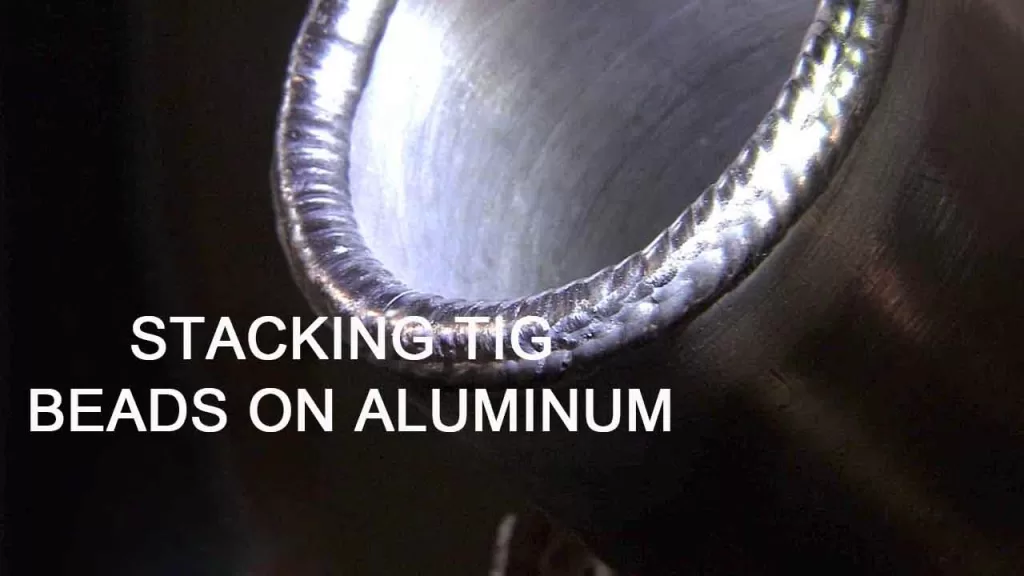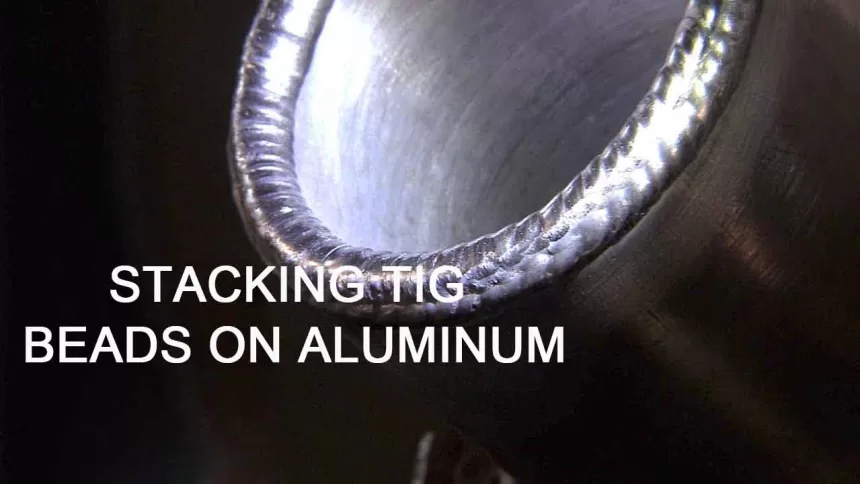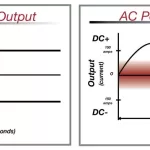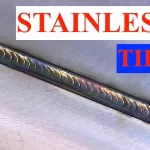AC frequency settings are a nice to-have feature but only if you understand what it does and where to use it. As a general rule, I use higher AC frequencies for thinner aluminum and lower frequency settings for thick aluminum…But just like everything else in welding, there are exceptions.
Stacking TIG Beads on Aluminum
Welding Town
Why AC Frequency Matters
In the pursuit of flawless aluminum bead stacking, grasping the significance of AC frequency is paramount. AC frequency dictates the number of times the welding machine’s current switches direction per second. For aluminum welding, this variable plays a pivotal role in determining the quality of bead stacking and overall weld aesthetics.
Alternating Current (AC) is where the direct of the flow of electricity switches rapidly from positive to negative.
AC is used for tig welding aluminum because it provides a cleaning action during the electrode positive and the buzzing sound you hear is due to the current switching direction.
The rate at which alternating current switches back and forth from Negative to Positive is call AC frequency.

Optimal AC Frequency Range for Aluminum Bead Stacking
Achieving mastery in aluminum welding necessitates a precise AC frequency range. We recommend a range between 100 Hz to 150 Hz for optimal bead stacking results. Within this spectrum, welders can strike the delicate balance between heat input and arc stability, ensuring a seamless stacking process.
Fine-Tuning AC Frequency: A Step-by-Step Guide
Step 1: Assessing Material Thickness
Before embarking on your aluminum welding journey, assess the material thickness. Different thicknesses require nuanced adjustments in AC frequency. For thinner aluminum sheets, lean towards the higher end of the spectrum, around 150 Hz. Conversely, thicker materials benefit from a slightly lower AC frequency, around 100 Hz.
Step 2: Understanding Arc Stability
Arc stability is the linchpin of successful aluminum welding. Higher AC frequencies, such as 150 Hz, contribute to a more focused arc suitable for thin materials. Meanwhile, lower frequencies, around 100 Hz, foster a broader arc ideal for thicker aluminum sections.
Step 3: Experimentation and Refinement
Welding is as much an art as it is a science. Our recommendation serves as a foundation, but true mastery comes through experimentation. Tweak the AC frequency within the suggested range and observe how it influences bead stacking. Through meticulous refinement, you’ll discover the sweet spot that aligns with your specific welding conditions.
Common Challenges and Solutions
Overheating and Burn-Through
One common hurdle in aluminum welding is the risk of overheating and burn-through, especially when pushing the material’s thickness limits. To mitigate this, consider lowering the AC frequency to 100 Hz for improved control and reduced heat input.
Insufficient Penetration
Conversely, insufficient penetration may arise, particularly when working with thicker aluminum. In such cases, elevating the AC frequency to 150 Hz enhances arc focus and penetration capabilities.
Advantages of Mastering AC Frequency
Enhanced Aesthetics
By honing your skills in AC frequency manipulation, you unlock the potential for visually stunning welds. The precision afforded by optimal frequency settings translates to neatly stacked beads, elevating the overall aesthetic appeal of your aluminum welding projects.
Improved Efficiency
Efficiency is the hallmark of a seasoned welder. Adept control over AC frequency not only enhances the appearance of your welds but also streamlines the welding process, allowing for quicker and more efficient project completion.
Conclusion
In the realm of aluminum welding, the mastery of AC frequency settings is the key to achieving unparalleled bead stacking perfection. By understanding the nuances of frequency manipulation, welders can transcend mediocrity and elevate their craft to new heights. At Welding Town, we stand as a beacon of expertise, providing welders with the knowledge needed to excel in their endeavors.
AC frequency is one of those settings that is very nice to have but not 100% necessary.
Older machines didn’t even have the ability to adjust AC frequency and were fixed at 60HZ…and we still managed to get things done.
But understanding some practical applications for different AC frequency settings can help you get the most out of your welder.
Lower frequency settings can help get more heat input into thick aluminum if you are limited in amperage.
Higher frequency settings choke down the arc for when you need a more focused arc and a narrower bead… like on thin aluminum lap joints.
I usually select a lower frequency setting when I need a fat-wide bead.
And higher frequency settings for when I need a more focused arc.
One use for different AC frequency settings is when you are stacking bead upon bead during a buildup repair weld.
Lower frequency settings around 50-60hz seem to help in laying down a fat-wide foundation bead.
Then subsequent beads can be welded using higher Frequency settings and that can help with stacking beads and bead placement.
AC frequency is just another tool on the tool belt and the more we understand how to use it, the better results we can get out of any welder.











